Additive-X shares its 3D printing story with LSST
Article Date | 2 February, 2023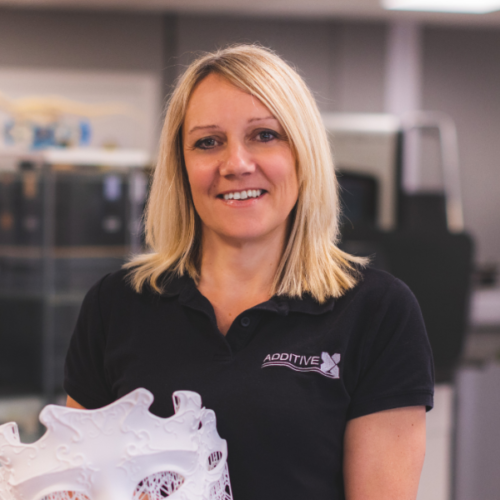
.
By Shan Wikoon, Senior Lecturer in Business (LSST Elephant & Castle)
Welcome to our blog on the exciting world of 3D printing, also known as additive technology! Here at the London School of Science and Technology, we are constantly looking for ways to inspire and educate our students on the vast potential of this industry and its career opportunities.
That's why we were thrilled to have the opportunity to sit down with Additive-X (https://additive-x.com), a leading provider of additive technology solutions in the UK, to hear about their journey and expertise in the industry. Shan Wikoon, a Senior Lecturer in Business (LSST Elephant & Castle) conducted this timely interview.
Jo Young, the managing Director of Additive-X, shared with Shan how they got started and expanded to serve a wider customer base. Now they can deliver transformative solutions to their clients. They highlighted a case study of a particularly impactful project they completed for a customer.
We also delved into affordability and accessibility for start-ups and small businesses. Additive-X revealed their approach to making their products and solutions accessible and any limitations that may exist.
Another important aspect of the industry is the availability of qualified employees and the training required for them. Additive-X indicated their experience in finding and training employees for the additive technology sector. They also informed us about any training or apprenticeship programs they offer for students and school leavers.
Finally, we discussed Additive-X's future prospects, plans, and challenges, as well as their vision for how additive technology will shape the future. They also conveyed a message for university students and universities/colleges interested in this field.
We are excited to share all the valuable insights and knowledge they shared with us. Read the full conversation with Additive-X below.
Shan: I am a business lecturer of the London School of Science and Technology. We currently have around 3,000 business students, and we teach a variety of business courses. We have partnerships with three universities. We do not currently offer any courses related to 3D printing technology. However, when we teach lessons on topics such as operation management, project management, or innovation and product design, we try to highlight the use of additive technology. I also began experimenting with 3D printing a few years ago. I have some small models that I created for a relatively low cost. I was surprised by the sophisticated designs that can now be achieved with even a small printer. We often use your website as a resource, as it is a fantastic and inspirational source of information for our students. It would be great for our students to have input from you directly. Please let us know the history and progression of your company.
Jo: I am the Managing Director of Additive X Limited, formally Express Group Limited. Before that, we started as Express Terminals. I've been with the company for 30 years and have seen a lot of change, particularly in the area of 3D printing.
The company was started in 1988, and initially, the focus on repairing computers and 2d printers (printers that print on paper). Then we focused more on spare parts distribution. As the market changed and printers became cheaper and easier to repair, the business shifted towards 3d printers. In 2012, we began to explore the use of desktop 3D printers and started using them to make parts for repairing other printers. We quickly realized the potential of 3D printing technology and decided to start selling them. Our initial target was the education sector, specifically schools and colleges. However, as we've grown, we now offer a wider range of industrial printers and sell to a variety of customers.
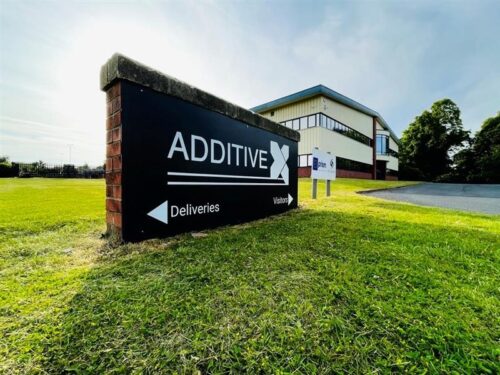
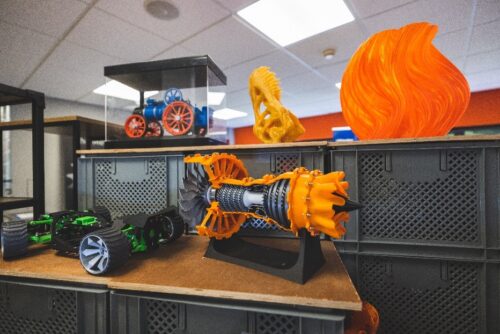
.
Shan: What is your USP (Unique selling point)?
Jo: What sets us apart from other 3D printing companies is that we're not just a new company focused solely on 3D printing. We have experience in managing customers, quality control, logistics, and all other aspects of running a business. Additionally, we offer a wide range of printers across different technologies and materials, and our goal is to make 3D printing accessible and affordable for everyone, including SMEs and large companies.
As a well-established company, we pride ourselves on providing excellent customer service and quality, along with efficient logistics. When it comes to additive manufacturing, we offer a carefully selected range of products. Many people approach us to sell their printers, but we only agree to do so if the product is truly exceptional and meets our strict standards. We perform thorough testing and only offer products that we would use ourselves. This unique approach and diverse range of products sets us apart from others and allow us to provide the perfect printer for the specific application. Our goal is not to offer expensive printers that cost £1,000,000 but instead to make 3D printing technology accessible and affordable for everyone, from small businesses to large corporations, to help them maximize its benefits.
Shan: What is your typical customer base?
Jo: Our customer base is quite diverse ranging from small, one-person product design companies to large automotive and aerospace companies. We've sold to the Ministry of Defence and many universities, who are investing in additive manufacturing centres. We're based in Yorkshire, but we have customers all over the UK. We have sold to customers including universities, jewellers, dentists, drone and robot makers, and others. For example, a local business in North Yorkshire called Labman , which specializes in manufacturing bespoke robotic and automated systems. Labman has made effective use of 3D printers, specifically the reliable and aesthetically pleasing parts produced by the Markforged range By using these printers, Labman has been able to save a significant amount of money and lead time, reduce costs by 75%, and even print bespoke parts for customers on-site by taking 3D printers out to their customers. So if the customer then needs something slightly bespoke, something extra when it's on-site, they can literally really print that for themselves. They've been very innovative, and I think 3D printing's done a lot for their business.
Another example is a company that manufactured a replacement part for a production line using 3D printing. The part may not look as impressive as its metal counterpart, but it is much lighter, cheaper to make, and still strong and reliable. The result was that the production line was able to continue running for longer between maintenance cycles resulting in cost savings for the business, even though the solution may not seem exciting at first glance.
Shan: That's very innovative. Are your products and solutions affordable for small businesses and start-ups?
Jo: Definitely. Nowadays, you can find 3D printers for less than £1000, even less than £500 that may do a decent job. Our range starts at around £2000, but for start-ups and small businesses who may not be ready to invest in a printer right away, we also offer a 3D printing service. They can send us their files, and we'll print them for them. This can be a great way to start, and as their business grows, they can then consider investing in their own printer. Additionally, we often find that the return on investment for our customers is very quick, often paying for itself within a few months.
There are often good grants available for people investing in something that can help them with research and development or for a new product. We try to help people find out what's available to them, as it can vary depending on where they are in the country. For small businesses, we try to make it as affordable as possible.
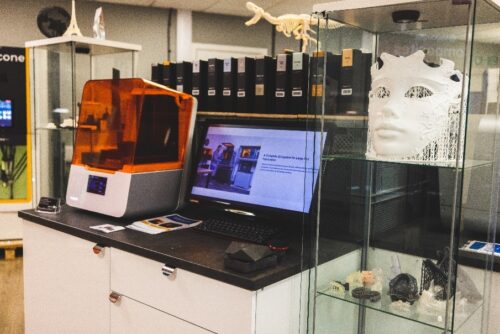
.
Shan: If I wanted to print something and let's say I don't have a printer, but I wanted to print a nice, maybe complex design, and I'm going to send you the model in midnight, hoping to get the printed model in the next business day. Do you have an automated process where your printer can quickly print it anytime?
Jo: At the moment, we don't have an automated process like that. That's a good point and a good idea. Currently, a person would take that here and assess it, decide which printer to use, and give you a quote before proceeding. However, in the next year, we're investing in what we're calling ‘our digital parts factory’.
Shan: Great! Can you find qualified employees in the sector easily? How do you train your employees for the additive technology sector normally?
Jo: Our company has a multi-faceted approach to hiring and training employees. We actively seek out graduates, especially those with engineering backgrounds, but are also open to candidates from other fields who have a strong interest in 3D printing. For instance, our technical services manager, who is responsible for managing our engineering and technical operations, started off as a warehouse manager but was able to excel in his role due to his skills and enthusiasm. We invest in our employees by offering in-house training and collaborating with manufacturers who provide comprehensive training courses that can be accessed online. To further support their development, we encourage hands-on experience by assigning them practical tasks.
We have found that providing training and hands-on experience has been beneficial for both the employees and our company. Additionally, we have noticed an increase in applicants who have prior 3D printing experience, which is a great advantage for us. This is largely due to the increased exposure to 3D printing in educational institutions such as schools, colleges, and universities.
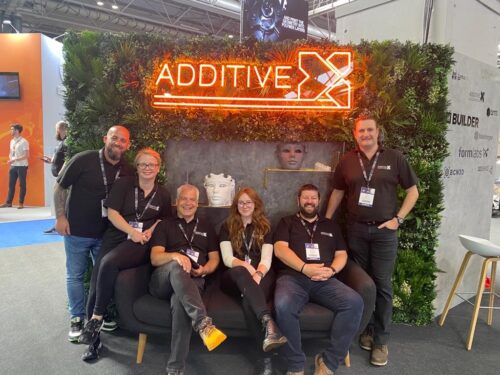
.
Shan: Do you provide additive manufacturing apprenticeship programs?
Jo: We don't currently run our own additive manufacturing apprenticeship program. I think we'll do that again in the future. We had such programs in the past for our 2D printer repair. Currently, we do employ apprentices in different areas of the business and offer things like workplace training, work experience, and engage with schools, colleges, and universities to provide opportunities for learning about the technology. We've even had foreign universities send students for 12-week periods, and we make sure they have a good experience in learning the technology while they're here. We also do day trips and workshops.
Shan: That's great. We should send some of our students as well. And I think that's why you were named one of the 1000 inspiring companies in Britain. What are your future plans?
Jo: Yes, that's right. Our future plans include big growth over the next five years, with a focus on expanding geographically throughout the UK. In terms of technology, I predict we will see both hardware and software advancements for the printers to become faster and more accurate. More materials will become available for additive manufacturing, so our business will be working with a digital manufacturing platform with more capability to print end-use parts. We'll also be delving more into scanning and reverse engineering for a slick end-to-end process. The Manufacturing sector is going to be a huge growth area in the coming years. Many manufacturers currently don't make enough use of technology, so we're building our own digital parts factory here. One of the key benefits of this is that it allows for lower carbon emissions by manufacturing locally, only producing what you need when you need it, rather than relying on an international supply chain.
And we believe we can sell this concept of a digital parts factory to other manufacturers, showing them how they can invest in the necessary equipment and make it all work together. I think it will be exciting to see manufacturers begin designing their next products with additive manufacturing and replacement parts in mind. There will be challenges along the way, but I believe additive manufacturing is one of the growth areas that will help the country move forward.
I think robotics, driverless vehicles, and battery technology are all industries that will greatly benefit from the technology. In the future, additive manufacturing or 3D printing will not be the only choice, but it will be the first choice for many more businesses. It is about manufacturing what you want, where and when you want it, not having a big inventory. The concept of digitalizing inventory will also become more prevalent.
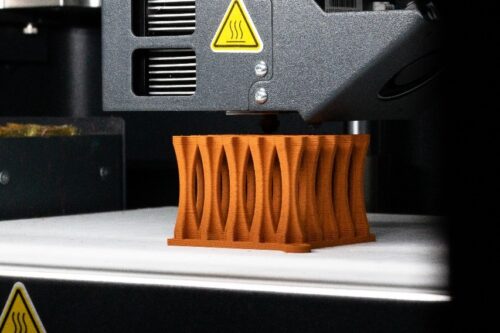
.
Shan: I have seen very large 3D printers used in the construction industry. They can print an entire house in a few days. Do you sell those printers too?
Jo: We do not sell them currently, but the concept of using large printers for the construction industry to print entire buildings seems to be a promising one. It reduces the time it takes to construct the building and is an exciting space to watch. However, it may not be something we pursue as a business. But we never say ‘never’.
Shan: Finally, what is your message for university students who would like to enter the additive technology industry?
Jo: Explore opportunities in additive manufacturing and 3D printing. I would recommend checking out Manchester Met's Print City program where different faculties and disciplines within the university are utilizing the technology in innovative ways, such as in architecture, art, engineering, and product design. If you have an interest in this field, it's definitely worth looking into.
Having an interest in 3D printing doesn't necessarily mean you have to be an engineer. If you're looking for a job in the next five years, it's important to have a basic understanding of what 3D printing is and what it can do. While you're in school or college, take the opportunity to try printing something and designing something using CAD software. Even if you don't own a 3D printer, gaining knowledge and skills in CAD will be beneficial.
Shan: Thank you for your input, Jo. We'll definitely share your story with our students and incorporate your suggestions into our curriculum. This will be a great inspiration and source of knowledge for our staff and students.
Jo: I appreciate it. Thank you for the opportunity.
Check out our blog to find out more about 3D printing/additive manufacturing technology, 3D printing industry, and new career opportunities.
.
Sharing is caring!




